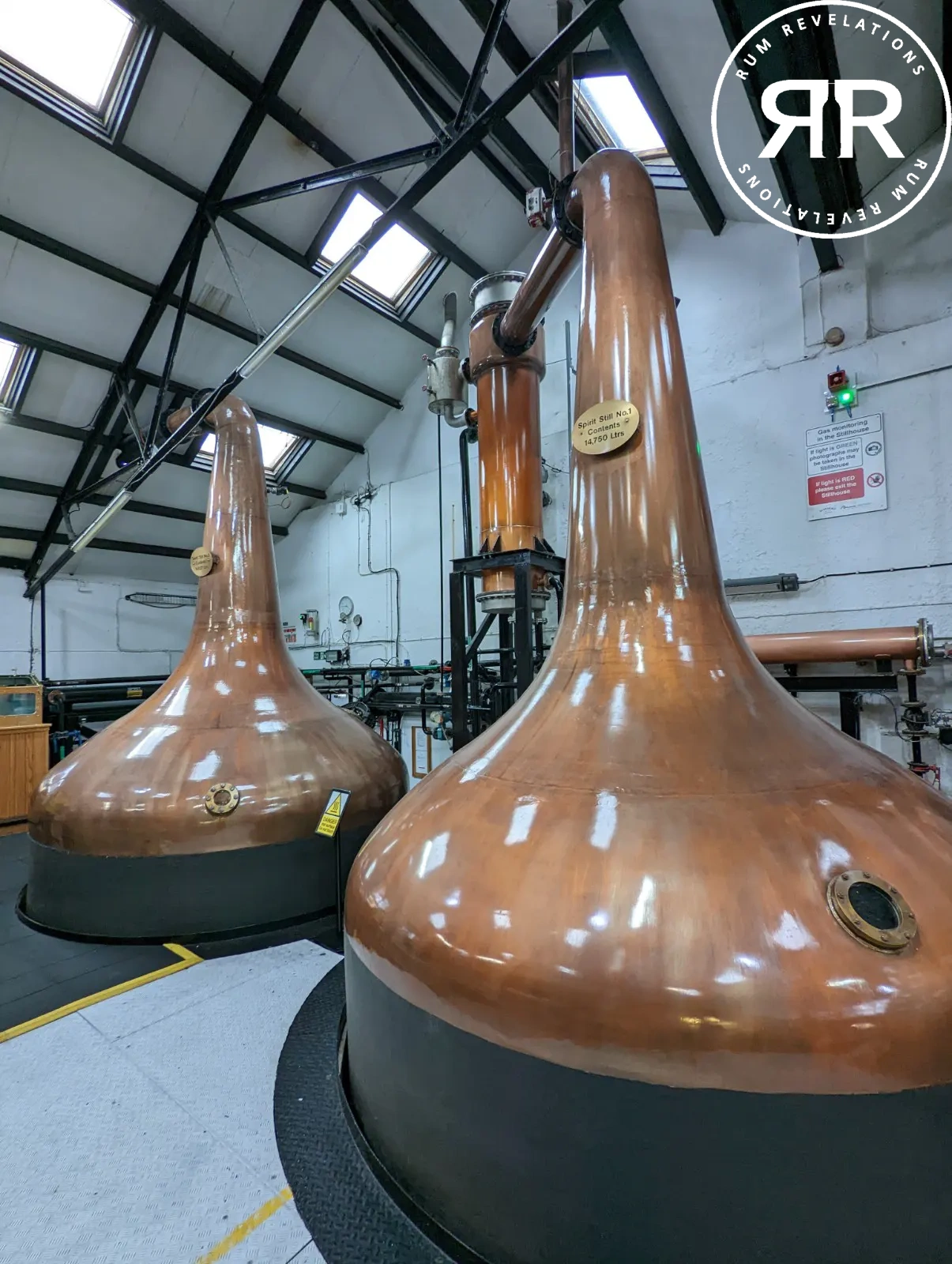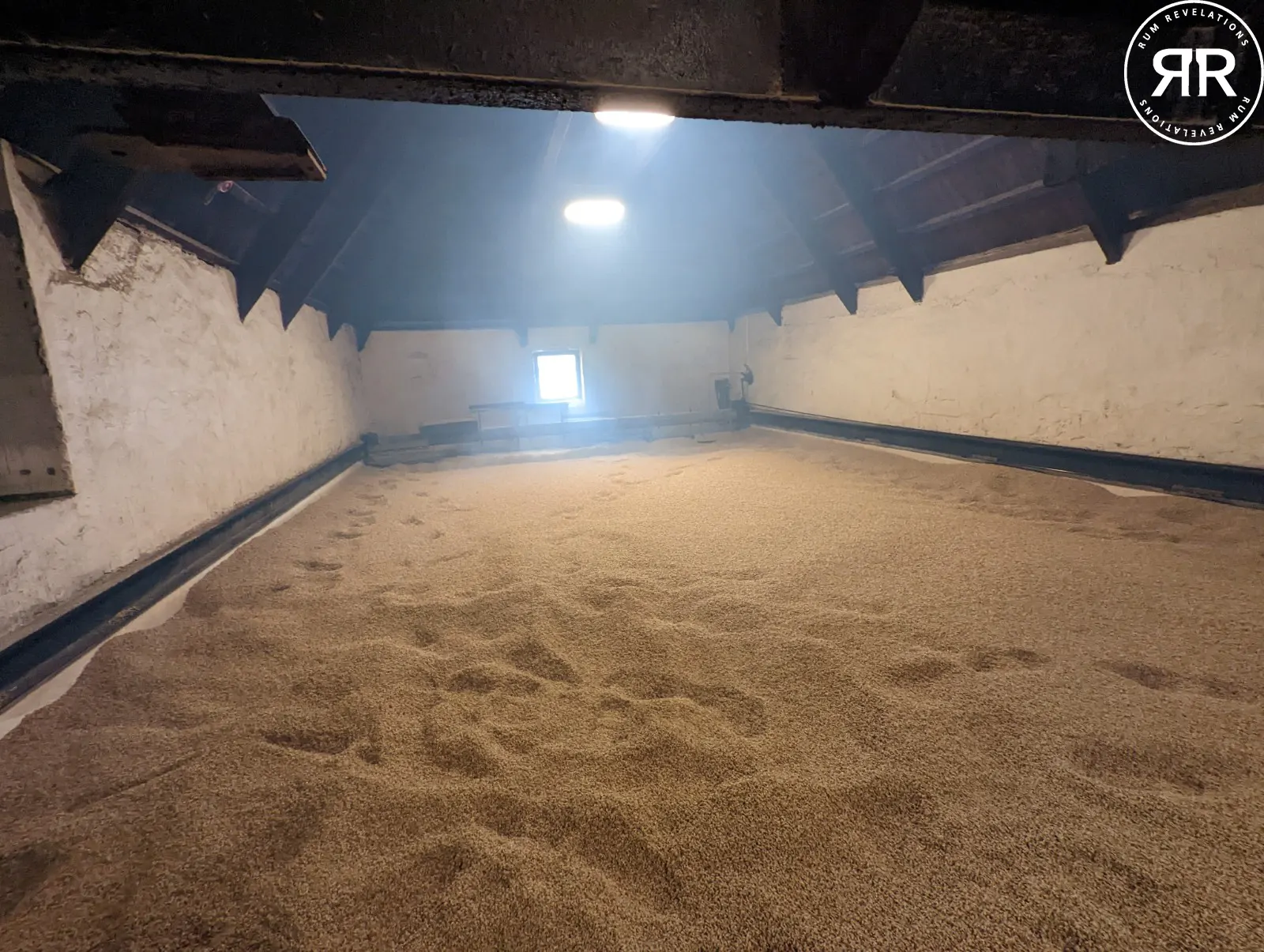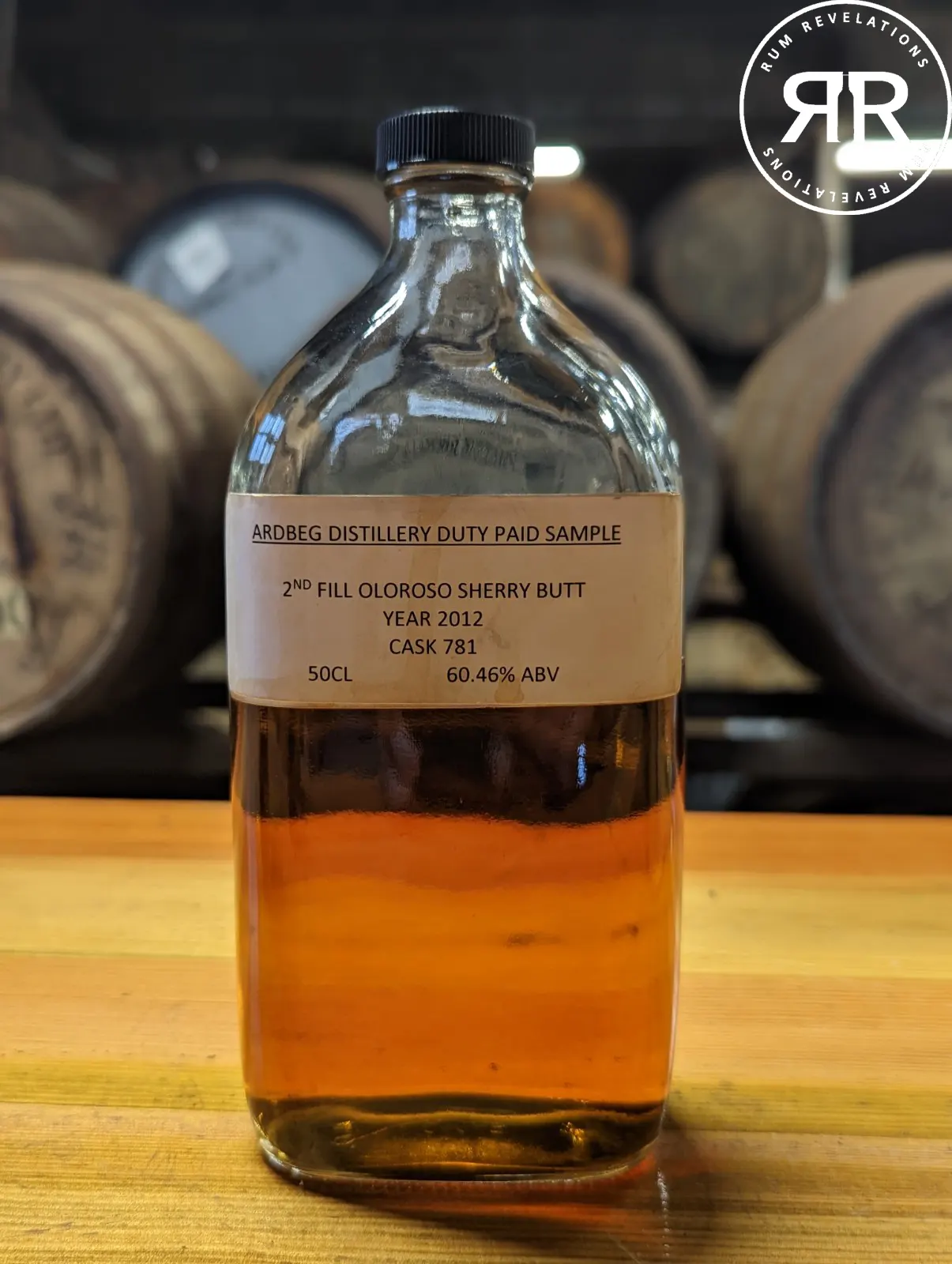Renaissance Rum Review: A Rebirth Of Rum?
- Ivar
- Mar 12
- 8 min read
Molasses pot still rum from Taiwan, why not?! Taiwan might not be the first country you think of when rum is on your mind. Perhaps it should be. In the past few years there’s been quite a bit of noise in regards to Renaissance Distillery, the brain child of Lina Chiou and wine expert Olivier Caen since 2017. A lot of that talk is about their labels, specifically the back label. It contains an enormous amount of information about the production process of that particular rum. I’ve never seen anything as detailed as that on a label. This is obviously making rum enthusiast’s hearts beat a little faster. There’s been a cry for transparency for many years, especially from the more serious rum drinkers. That makes it nice to see a label like this, and it is good marketing of course.
Producing funky fruity rums through a combination of long fermentations, dunder and pot stills has mostly been connected with Jamaican rum. Times have changed though. Rum is made this way in a myriad of places, including Mhoba in South Africa, Barbados, Taiwan and others. Renaissance uses both molasses and cane juice for fermentation. The distillery houses 2 stills. A Taiwanese made 500 liter stainless steel still and a Charentais copper pot still of 1200 liters.
They seem to love using French casks, likely down to the love of wine of distiller Olivier Caen. Many non French are used as well, like Japanese, Spanish, virgin American oak and ex bourbon barrels, leading me to think they are suffering from cask FOMO. A lot of their expressions have been aged in two casks through cask finishes. These always make me wonder “did it work out?”.
It’s not only the label that’s unique, the prices are as well. 175 British Pounds for a 2 year old rum will make the eyes of many enthusiasts water. Rather questionable for such a young rum, despite it being “small batch” and produced far away from Europe and North America. This particular release is the Fino cask, a Whisky Exchange exclusive. Renaissance mentioned it being available on their Instagram in January 2022. More than three years later, it’s still for sale at The Whisky Exchange.
I mentioned the fantastic and rather flashy back label. The front label is the opposite. It’s very understated and reminds me of a wine label. Based on that, I don’t think someone would pick this up if they didn’t know exactly what they were buying.
I was able to get my hands and lips on four Renaissance releases. All in the form of samples. Two I traded for with Steven James in the UK. The other two were gifted to me by the wonderful people of Raising Glasses, an American independent bottler run by John Hsu and Lorri Kern. They opened for business in 2020 and released their first expression in 2021. What a tough time to start a company!

It’s pretty cool that they have bottled a couple of releases from this distillery. They do seem to focus on less “regular/typical” rums compared to most other bottlers. That, coupled with having some of their releases in smaller bottle sizes, makes them stand out. John was nice enough to give some more information about the rums they chose:
“We believe these are only the 6th and 7th casks to make it out of Taiwan (their releases sell out almost immediately in Taiwan so they don't have any huge financial incentive to do exports) - 2 for the UK (Whisky Exchange), 2 for France, 1 for Denmark that we know of, so these are the first North American releases. We were originally going to do one full cask but liked both of the samples from these casks so much we asked if we could do two cask splits instead (the remainders sold out immediately in Taiwan as usual) so we could show some the range that Renaissance is able to produce.“
“We chose the cognac cask ("PUYUMA") because it's an approachable crowd pleaser - it shows off the quality of the base dundered distillate with a gentle cognac finish (Hennessy cask). We chose the bordeaux cask ("CLOUDED LEOPARD") because it's a more complex, an example of what Renaissance can do with strong cask finishes. We generally dislike red wine finishes (red wine often clashes with rum distillate, tannins can easily overwhelm the finish, etc.) but we really loved a similar pick that the Whisky Exchange did and jumped at the chance to get one a year older. It's a Deuxieme Cru cask from the Leoville Poyferre vineyard which means nothing to me (3 years of wine classes? Barely remember a thing. 3 minutes listening to Maggie Campbell or Richard Seale? I remember every word!) but apparently it's an uber-boutiquey Bordeaux that impressed French vinophiles. Olivier from Renaissance came from the French wine industry and he leverages his contacts to get some incredible casks - Leoville Poyferre has only been used once before as a finish (in a mezcal, of all things).”
The cast:
Renaissance Pineau Blanc Cognac Cask – 2 years (2019-2021) – 67%
Renaissance Fino Cask – 2 years (2018-2021) – 62%
Raising Glasses Clouded Leopard Saint Julien Bordeaux Cask – 5 years (2019-2024) – 66.5%
Raising Glasses Puyuma Cognac Cask – 6 years (2018-2024) – 67.1%

Nosing
Renaissance Pineau Blanc
From sour grapes to “sweet” raspberry, oak, orange pop, a barn full of hay and wood, light acetone, candle wax, crème brullee, sour bubble gum, strawberry pop, sour milk, blue cheese wrapped in candle wax, light cheap leather. One can definitely call this interesting, but not all in a good way.
Renaissance Fino
Wet soggy oak, chocolate, light cardboard, red wine, dried flowers, molasses, light licorice, leather, light paint, a very faint sour note. Wonderful nose.
Raising Glasses Clouded Leopard
Wet wood, red wine, light varnish, fairly fruity, red apple, light plastic/rubber, saw dust, vanilla, raisins, sweet berries, oaky tobacco. Coming back to it after a while it turned very herbal. Nice.
Raising Glasses Puyuma
Waft of paint thinner, horrible chocolate with fruity “rum” filling, sour raspberry candy, oak, molasses, rubber, wine with sour milk, rice crackers, blue cheese, light olives. Meh.
Tasting
Renaissance Pineau Blanc
Strawberry, grapes, oak, citrus, orange pop, light mint, light paint, somewhat fruity and creamy. Medium long finish. Interesting, I do keep going back for a sip, but that sour strawberry pop ruins it a bit for me.
Renaissance Fino
Pretty hot, even for 62%. Great oak flavour, molasses, slightly grassy/hay character, citrus, vanilla, peppery, chocolate. Some light wine on the medium finish. Quite light and fruity, which is not what I was expecting after nosing it. My assumption was more towards something heavier, perhaps something Guyana like.
Raising Glasses Clouded Leopard
Pretty hot. Eucalyptus, oak, herbal, lots of oak spice, light red wine, raisins, fairly sweet, cherry, wine gums. Light fruitiness coming through all the way. Fairly long dry finish with very little bitterness. That bitterness does linger for a long time, even with drinking lots of water.
Raising Glasses Puyuma
Lots of cognac/wine influence, oak, cheap chocolate ice cream (the third part from Napolitana ice cream in the supermarket), lots of red fruits, light olives, molasses. Very oaky, like licking a barrel. My mouth is very dry. Slightly bitter on the medium finish.
Conclusion
I don’t know the terroir of Taiwan and have no previous experience with tasting rum from that part of the globe. This makes it a little hard to judge them. I can only compare it to the gazillions of rums I’ve tried from most other Earthly corners. I would love to taste their distillate straight from the still, both the molasses and the cane juice rum. That would be a real educational moment in regards to what their fermentation and stills produce and how the casks influence it. I’ve been able to do that at Mhoba in South Africa and Foursquare in Barbados. In both cases, the vast majority of their rum releases improve through their cask ageing.
This is not always the case though. A few years ago I visited the wonderful Islay Rum Distillery in Scotland. Since I was there, I figured I should check out Bowmore Distillery as well. I was lucky to get a private tour. What an amazing experience! Before I left, they gave me some samples to try. I opened the 15 year sherry cask (it might have been 12 year, can’t remember) and had a few sips. I thought it was very easy drinking and could see myself sip it for an evening. However, it didn’t excite me at all. Thin mouthfeel, not supper expressive, not bold. Very agreeable. Not my thing. Then I tasted some new make at high strength. Wow! That was great! So I asked the guide “what the hell are you doing with this to make it end up like that sherry cask release?”. We laughed about it, and that was that. Of course the sherry expression is appealing to a large group of people and liquid straight off the still is not. It does make you think about the potential of the distillate and the choices the distillery make to create the final product. I had a similar experience at Ardbeg. Went through tasting their standard lineup. Was all “thin”, “ok”, “decent”, “meh”, “not expressive”. Until we went to the ageing warehouse and tasted whisky straight from an Oloroso cask. Wow! I asked if it could be bought as is. The guide said “No, we are going to marry it (which means blending in the rum world)”. WHAT???!!! Anyhow, let me stop talking about whisky and get back to rum.

I can’t call these four Renaissance samples great, nor can I call them bad. I’m somewhere in the middle with them. I have a sneaky suspicion that the fancy sounding cask regime is messing up the distillate here and there. I found that especially with the Renaissance Pineau Blanc and the Raising Glasses Puyuma Cognac cask. I’d call them interesting, but with too many flavours I don’t want to taste in rum. The Pineau Blanc might appeal to you if you like some of the wild and crazier stuff out there, the Clairins and Mexican rums of this world. I can personally do without it (no no, not without the Clairins!). Puyuma is the oldest expression here and might have been in cask for too long. It’s also hard to couple an estery rum to a cask, unless it’s ex bourbon I find. It easily becomes a mismatch. Palate is better than the nose though, which is not difficult in this case as the nose is very average.
The Whisky Exchange Fino Cask and Raising Glasses Clouded Leopard are the winners here. Both of them have wonderful noses. On the palate there is a myriad of things to discover, with nothing really off putting. Clouded Leopard's sweet fruity palate makes for a nice rum. I do find them hot, especially the Fino, which is also the youngest at 2 years. Both are very dry, literally sucking the saliva out of my cheeks. Perhaps down to using new oak? Clouded Leopard is a tad bitter on the finish and that bitterness lingers for a long time, even though it’s somewhat subtle. Without these last few characteristics, both would have scored in the 80s.
I’m definitely curious about tasting more Renaissance rums, especially ones that haven’t spent time in new oak………and of course new make distillate. What I'm also looking forward to is following Raising Glasses's progress in the challenging independent bottler scene and to see how they will continue to surprise us with eccentric releases.
Scores
Renaissance Pineau Blanc – 65
Renaissance Fino – 79
Raising Glasses Clouded Leopard – 77
Raising Glasses Puyuma – 62
Click here for info on the scoring method.
Click here for the complete list of reviews.






